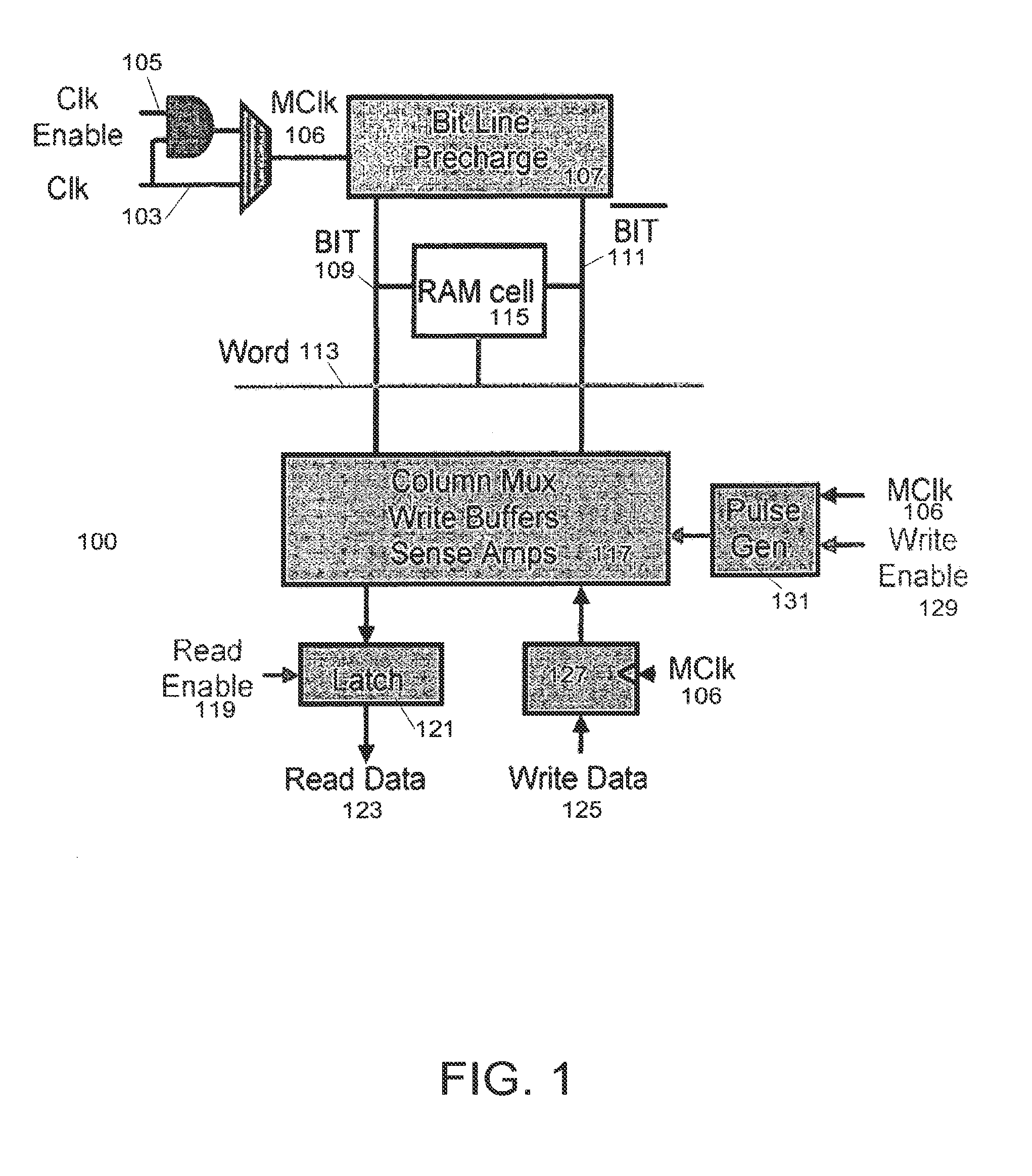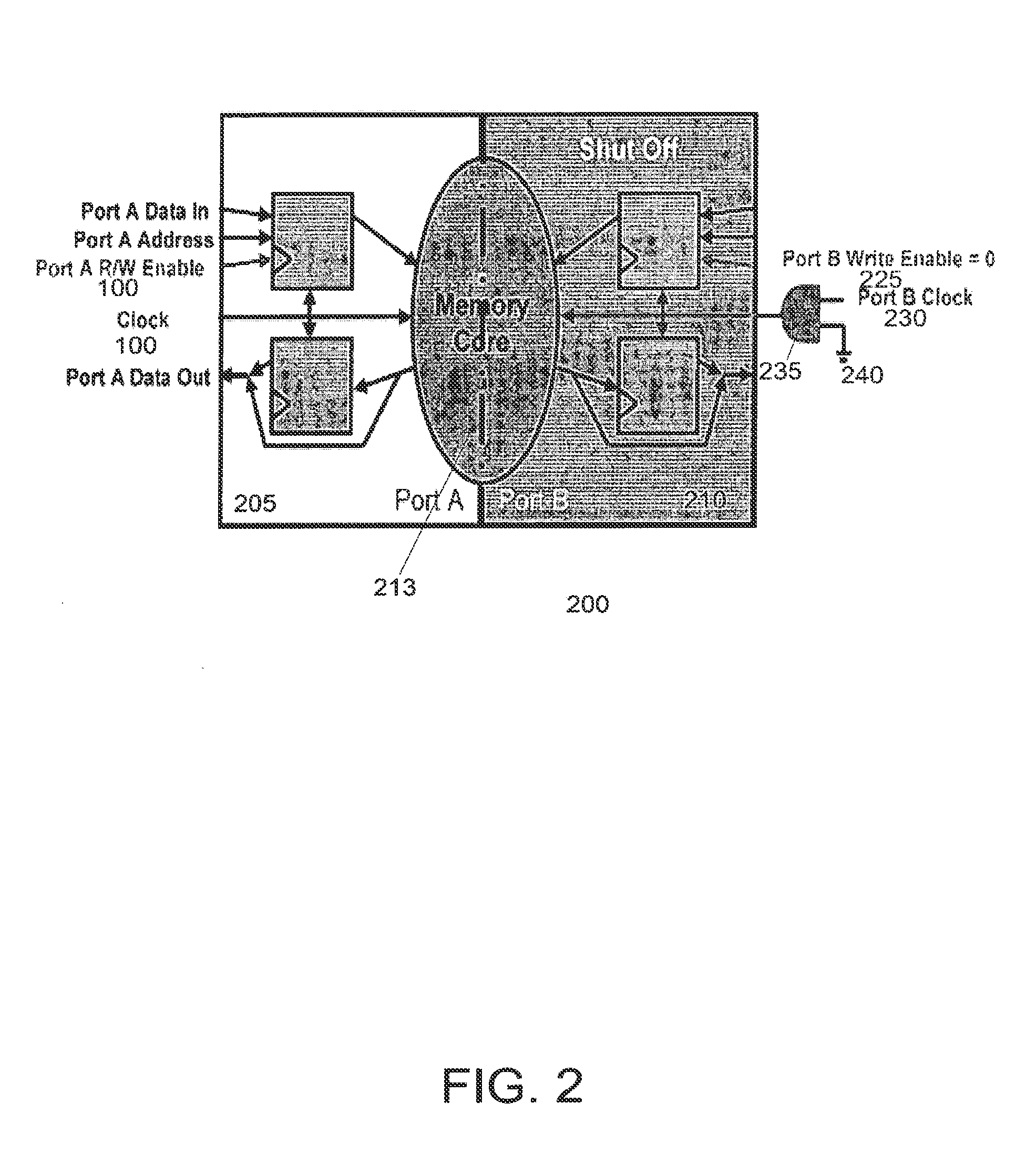Power-aware RAM processing
a ram processing and power-aware technology, applied in computing, digital storage, instruments, etc., can solve the problems of time-consuming optimization process, high power consumption of ram processing, and high cost of manual optimization process, so as to reduce power consumption and suppress clock transitions
- Summary
- Abstract
- Description
- Claims
- Application Information
AI Technical Summary
Benefits of technology
Problems solved by technology
Method used
Image
Examples
Embodiment Construction
[0026]FIG. 1 illustrates an example embedded memory 100 of a programmable device suitable for use with the optimization techniques of embodiments of the invention. FIG. 1 illustrates a single access port for reading and writing data to embedded memory 100. Other implementations of embedded memory 100 can have multiple access ports, similar to that shown in FIG. 1, enabling read and / or write access to the embedded memory 100.
[0027]Embedded memory 100 receives a clock signal via a clock signal input 103 from another portion of the programmable device. As discussed in detail below, the operation of the programmable device is directed by control signals and the clock signal. In this implementation, the clock signal input 103 is gated with a clock enable signal provided via a clock enable input 105 to produce a memory clock signal 106. The clock enable signal input 103 can be used to selectively deactivate the memory clock signal 106, thereby deactivating the entire embedded memory block...
PUM
 Login to View More
Login to View More Abstract
Description
Claims
Application Information
 Login to View More
Login to View More - R&D
- Intellectual Property
- Life Sciences
- Materials
- Tech Scout
- Unparalleled Data Quality
- Higher Quality Content
- 60% Fewer Hallucinations
Browse by: Latest US Patents, China's latest patents, Technical Efficacy Thesaurus, Application Domain, Technology Topic, Popular Technical Reports.
© 2025 PatSnap. All rights reserved.Legal|Privacy policy|Modern Slavery Act Transparency Statement|Sitemap|About US| Contact US: help@patsnap.com



